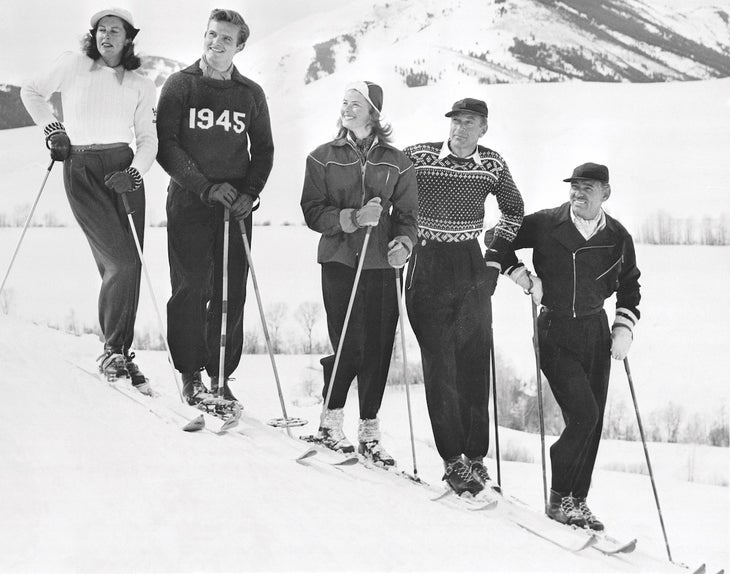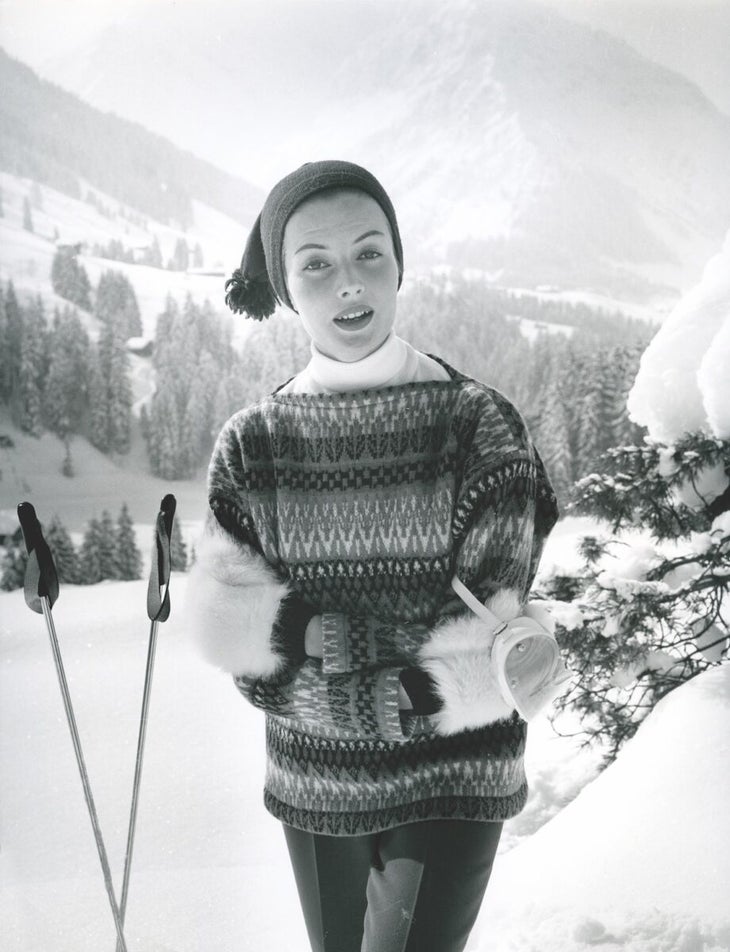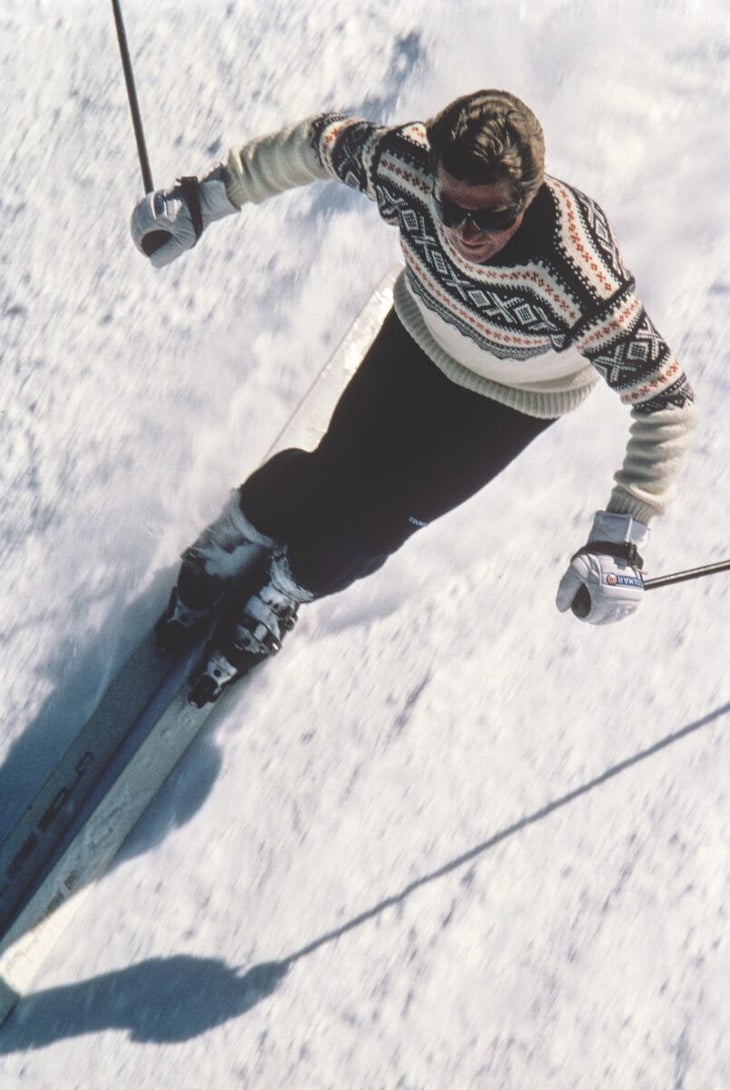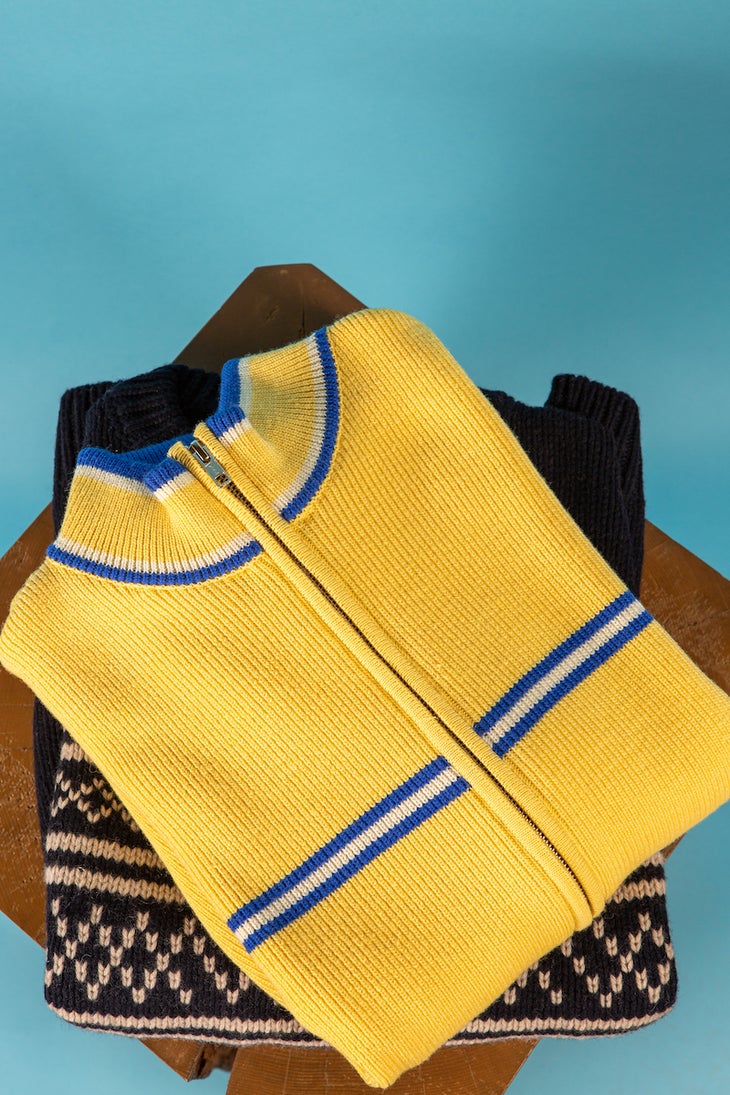Products You May Like
My affair with wool ski sweaters started early. One of my uncles had brought an old Norwegian ski sweater back from WWII. Rumor was that he’d swapped his prized Pendleton wool jacket with a sailor in the Merchant Marine who was fleeing Norway’s Nazi occupation. I was the only person in my family who skied, and the sweater hung in the attic of our family farmhouse forever.
By the time I appropriated it, the sweater was already more than 40 years old. I paired it with my dad’s Korean War wool knickers (also looted from the attic) and long wool socks. It was a fashion statement of sorts, even back then, but that sweater saw me through dozens of wet, blustery days at Hoodoo, our local ski hill, as I mastered the stem christie and snowplow.
I’ve been skiing for decades, and if there’s one constant throughout, it’s my love of wool sweaters. I was wearing a Setesdal sweater, with its silver buttons, decorative shoulder, and cuff bands, when I visited the Holmenkollen Ski Museum outside of Oslo, Norway. As I wandered through the maze of skis and old photos, I began to see my sweater with fresh eyes.

Knitted wool sweaters have been a staple for thousands of years, and like a good wine, classic designs often tell a story or regional history. You’ll find that every sheep-rich region in the world—Norway, Iceland, Finland, Ireland, Germany, Peru, and beyond—have patterns with long pedigrees. The popular knit brand We Norwegians uses the Setesdal pattern that dates back centuries.
“Many sweaters embrace the past and future,” says We Norwegians co-founder Oyvind Lauritzen. “The crossings of the old Setesdal pattern were knitted into the sweaters of Vikings and seamen to protect them from the dangers of the sea.”
Related: The gear that saved me on a backcountry ski trip in Greenland
Norwegian adventurer Fridtjof Nansen skied across Greenland in the 1880s and became an ardent ambassador for wool layers. By the early 1900s, the first rope tow appeared on the slopes of Northern Europe and ski sweaters were embraced for both function and fashion. Dale of Norway, still a leader in wool sweaters today, got its start in 1879. The German luxury brand Bogner started importing Norwegian ski sweaters in 1932 and the style (as well as the revolutionary Bogner stretch pants) was picked up by racers and recreational skiers alike.

Norwegian ski superstar Stein Eriksen (brother of Marius, the alpinist, skier, WWII fighter ace, and POW for whom the popular Marius sweater was named), moved to the U.S. in 1952. Eriksen became an ambassador for Norwegian ski culture, especially to the rich and famous he taught to ski. He wore sweaters created by his mother (clothing designer Bitten Eriksen) who is rumored to have developed the initial Marius design.

Thanks to influencers like Eriksen, the world took note of the trend. By the mid 1950s, celebrities such as Audrey Hepburn, Grace Kelly, Sophia Loren, Gary Cooper, Ernest Hemingway, and Cary Grant all sported classic ski sweaters.
It wasn’t just celebrities or the rich and famous who took to the trend. Soldiers of the 10th Mountain Division recognized the value of wool sweaters as alpine attire and introduced them to the slopes of Stowe, Sun Valley, Vail, and Aspen. Others, like my uncle, a lifelong logger, saw their value as functional work wear.
“There’s a reason that wool ski sweaters have been such an enduring fashion piece and important since the beginning of the sport,” explains Devon Cruickshank, GM and VP of softgoods for Rossignol and Dale of Norway North America. “They are renewable, fully natural, antimicrobial, and highly adaptable to sport through different blends, knitting techniques, and types of yarn choice. A quality wool garment is as reliable as a Swiss watch.”
The high performance value of wool sweaters comes from the yarn itself. These days, many sweaters are primarily made from Merino wool, a yarn that is highly breathable, naturally water-repellent, and moisture-wicking thanks to the properties of wool yolk, a wax secreted by sheep which conditions and protects the sheep’s wool. Yarn manufacturers now source the wool from all over the world, with Australia, China, Russia, New Zealand, and the U.S. all being big suppliers. Sweater yarn can also include alpaca, cashmere (from goats), pashmina (from Tibetan mountain goats), shahtoosh (from Tibetan antelopes), Angora (from Angora rabbits), and mohair (from Angora goats).
“A Merino wool ski sweater is the best temperature-regulating mid layer you can wear,” explains Scott Mackenzie, founder of Delaine & Co., a relative newcomer to the wool sweater market. “It keeps you warm in the morning hours and then breathes in the afternoon when the slope is making you work. It’s not bulky and wool doesn’t absorb body odor like synthetic material. Plus, it’s sustainable and will last a lifetime.”

As proof, Amundsen North America still has woolen sweaters from Roald Amundsen’s 1911 expedition to the South Pole. “Wool has proven to be the most robust layer for centuries and will never let you down—even when soaking wet. With care and repair a woolen sweater will last for a century,” says Christian Lovenskiold, managing director of Amundsen North America.
It’s true that technical gear like waterproof yet breathable shells, puffy jackets, and lightweight down and synthetic layers have taken a bite out of the wool sweater market. But the pendulum always adjusts. While synthetic shells and light down insulation are here to stay, wool sweaters as mid layers and even stand-alone top layers on sunny late-winter and spring days are on the rise.
I spent the ski season in La Grave, France, where many diehard skiers congregate. In addition to headbands, the fashion wave was hand-knit wool ski sweaters. Many of the skiers came from Sweden, Norway, the UK, and France, and many, especially those in their late teens and 20s, sported sweaters knitted by a mother, aunt, or girlfriend. I’ve started to notice more ski sweaters at North American ski areas, too, from Lake Louise to Mammoth.
Perhaps it’s a desperate quest for individuality from the sea of uniform shells. Or a conscious effort to move from synthetic to renewable fibers. Or, and this is the one I like best, a reconnection with thousands of years of history and design.
More On Ski Culture
Is the ski bum an endangered species worth saving?
Sorry Dex and T.J.—’Aspen Extreme’ is for the girls
It’s time to reconsider what skiers think is cool
